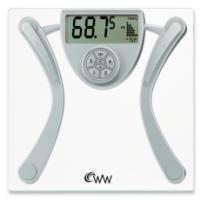How many calories do I need to lose weight? How many calories do I need to gain muscle? How many calories…this and that and the other thing! I see these questions asked very often, but I always point out the same inherent problem each time they are asked.
Calculating maintenance calories is the first and foremost step that needs to be taken before an individual can specifically target losing weight or building muscle mass. Maintenance calories, in this regard, are the fundamental starting point that can’t be omitted if you are really serious about achieving your fitness goals. After all, if you don’t know how many calories are needed to maintain your weight, how can you possibly know how many calories you need to lose weight or gain muscle? Let’s begin with the basics.
Calories In vs. Calories Out:
Following the basic laws of science, if you take in more calories through food per day than you wind up burning through activity that same day, over time you will put on weight. On the other hand, if you take in less calories than you wind up burning, over time you will lose weight. Of course, the key is consistency once you figure out your particular goal of weight loss or muscle gain. You can’t be all over the place (irregular) with your intakes if you wish to succeed.
Following this concept, how will you know if you’re over your maintenance calories or under if you don’t know that maintenance in the first place? Well, you can adjust your diet and weigh yourself each week, noting the results and making changes as you go along. However, that’s not exactly what we’re here for, right? Successful results take time, but with the same token, we can’t be wasting valuable time attempting to figure out if what we’re doing each week will yield results. It’s too troublesome, and often times you can wind up staying the same weight and losing a week of results in the process. Adding to this dilemma, irregularity in daily caloric intake can greatly hamper results, since you don’t bother counting calories as there’s no goal amount that you’ve established in the first place. Sounds like an escalating mountain of obstacles? It is. Fortunately, you’re here because you want to figure out your maintenance calories, and we’re glad to help you.
There are two very well known equations that you can use, and I’m not going to tell you which one is better because they are both popular equations for figuring out maintenance calories. Your best bet is to use both, and average out the final number for the best guesstimation.
Harris-Benedict equation: Maintenance (Men) = 66.47 + (6.23*your weight in pounds) + (12.67*your height in inches) – (6.76*age in years)
Maintenance (Women) = 655 + (4.34*your weight in pounds) + (4.69*your height in inches) – (4.68*age in years)
This method was the original method developed in 1919, it’s still very useful to this day (otherwise we wouldn’t be sharing it with you!)
Mifflin equation: Maintenance (Men) = (10*weight in kilograms) + (6.25*height in centimeters) – (5*age in years) + 5
Maintenance (Women) = (10*weight in kilograms) + (6.25*height in centimeters) – (5*age in years) -161
This method is pretty recent and takes into account our more modern lifestyle.
The two methods obviously have different measuring standards so here are the conversions:
1 inch = 2.54cm (Ex. Someone 6 feet tall (6*12 inches = 72 inches)(72*2.54cm =182.88cm)
2.204 pounds = 1 kilogram (Ex. Someone who is 180 pounds = 180/2.204 = 81.67kg)
______________________________________________________________________________
Before you go on with the calculations, you have to keep in mind that these numbers will be a guesstimate. You will not know the exact number no matter what you do, but you can definitely come close enough to where the difference is negligible. Furthermore, the end amount that will come from these equations will be determined without factoring in your activity levels. This is a very important problem, because although the calories needed to maintain weight may be the same for individuals with eerily similar stats, their activity levels might be extremely different and make that calculated maintenance quite a bit off. Clearly, the number you get from these equations will work better for an individual who lives a sedentary lifestyle (office job) as opposed to someone who does high a high level of activities (construction). We’re also not counting any gym-going.
In order to solve this problem, we can go about it in 2 different ways:
1) Shortcut Method:
Upon calculating your maintenance calories from the equations above, you can go buy the Jawbone Up3 Activity Tracker. It’s not necessary to do so, but if you want to cut the amount of work you are required to do, this is the most accurate gadget of the lot. The product basically allows you to wear a wristband which counts the amount of calories you are burning not only through activity, but even simple tasks such as breathing and sleeping. What’s good about it is that it actually does this accurately, and if you’re looking for something this precise the Jawbone Up3 is the best out there. Check out our Jawbone Up3 review if you want to know more about this. If you’re not inclined to spend money, no problem! Continue on with method #2 discussed below, it’s less precise, but it will certainly get the job done.
2) Trial and Error Method:
Upon calculating your maintenance calories, we have to do a little bit of improvising. This step is important, and it’s solely up to you. You have to account for your own activity levels throughout the day and guesstimate accordingly from there. If you hit the gym a few times a week, whatever your maintenance becomes, you’ll want to up it up to 500 calories (depending on how intense you are with your workouts, etc.) If you play sports, you do the same. For a ball park figure, I’d up the calculations 250 calories, and below you’ll learn what you can do from there.
Once you’ve estimated what your maintenance is (including the slight increase mentioned just above), it’s time to put it into action. Step on the scale and measure your weight for the next 3 days, each morning upon waking after using the bathroom. Take the average weight you get and use that as your body weight. For that next week, eat at the maintenance you’ve calculated here. Of course, you don’t need to hit it perfectly, round the number to the nearest 100th. After a week, record your weight. If you’ve dropped a bit, it means you’re in a slight caloric deficit, if you’ve gained a little, you’re on a slight surplus. Since this article is simply about calculating, we’ll finish up by saying that whatever the result is after that week, it will determine your next step.
If you’re on a surplus, drop the calories a bit. If you’re on a deficit, up the calories a little bit. Do this for another week (remember, this is the trial and error part), and you should have a steady weight at the end of that week (anything up to a pound of a difference, because we have to account for possible water weight based on the type of food you eat). Also, keep in mind that you can skip this last step if you already know what you’re trying to do. If you are attempting to lose some weight, you don’t have to up the calories and adjust to find your maintenance…just keep going with the same amount you were using and balance from there as you continue to drop weight (less weight = less calories needed to maintain = small drops in maintenance to continue at the same pace). Of course, vice versa if you’re attempting to build size. However, the step is necessary if you first want to get your maintenance for sure, so that you can track your progress perfectly from the very beginning. Including the extreme that you wind up dropping weight during the time you’re trying to find your maintenance (and you’re attempting to build size), it follows that you’ll up the calories quite a bit more to not only remove the counter-productive deficit but also go above maintenance. It might sound confusing, but it’s not! Just stick to the Calories In vs. Calories Out understanding and you’ll be fine.
(Below you’ll find some guesstimated/rounded maintenance calorie counts – little to no physical activity)
Males:
Age: 20, Height: 5’10, Weight: 180lbs – 2,200 calories
Age: 25, Height: 6’1, Weight: 200lbs – 2350 calories
Age: 30, Height: 5’7, Weight: 160lbs – 1975 calories
Females:
Age: 20, Height: 5’2, Weight: 110lbs – 1,460 calories
Age: 25, Height: 5’7, Weight: 135lbs – 1670 calories
Age: 30, Height: 5’4, Weight: 120lbs – 1500 calories
Once your maintenance calories are figured out and you’re on the right track, for best results in regards to your specific goal, visit our Calories Per Day? article so you know what the best caloric surplus/deficit is for muscle gain/fat loss respectively. Good luck!
Incoming search terms:
- maintenance calories
- calories needed to maintain weight
- calories to maintain weight
- how many calories to maintain weight
- calories needed to maintain weight men
- calories for weight maintenance
- maintenance calories for men
- how many calories to maintain weight men
- calories to maintain 135 lbs
- how many calories to maintain 180 pounds








My spouse and I stumbled over here from a different web page and thought I may as well check
things out. I like what I see so now i am following
you. Look forward to looking at your web page again.